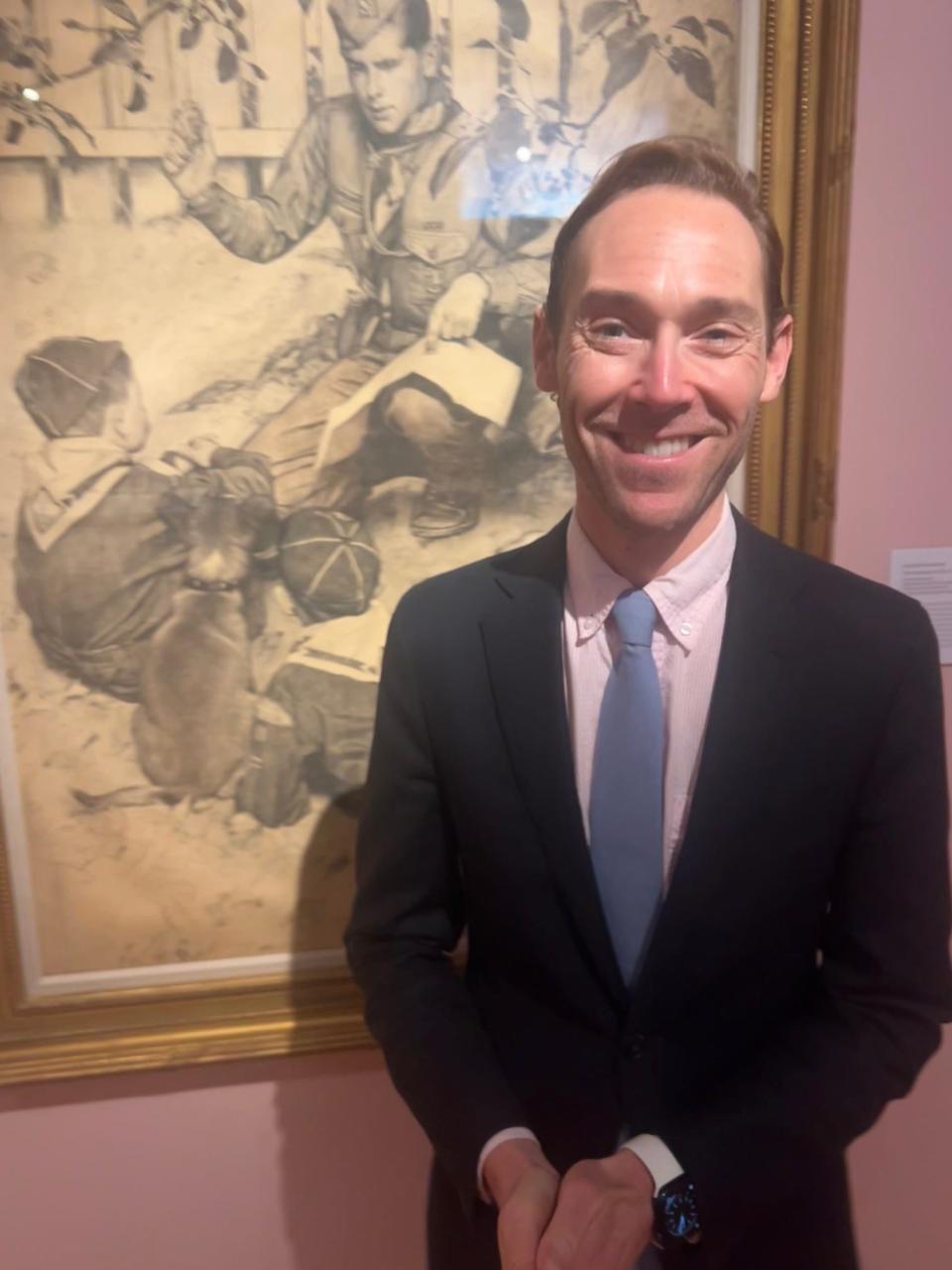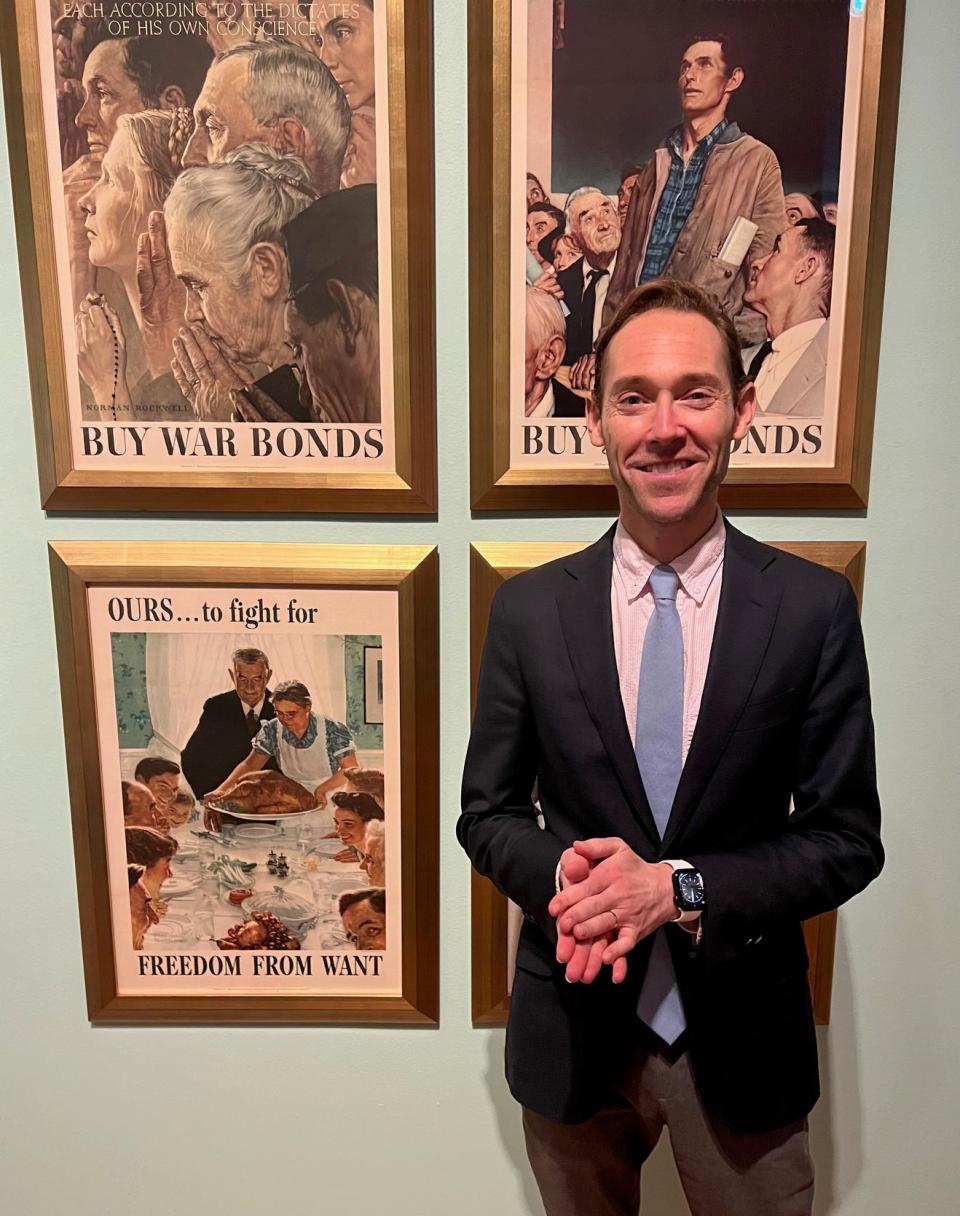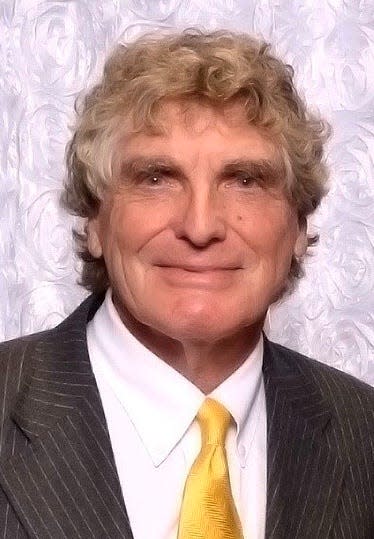'Something that speaks to them': The building of a world-class art museum in Lakeland
Did you know what you wanted to do with your life when you were very young?
Alex Rich did, and by the time he was in his 30s he was doing it – as chief curator and executive director of the Polk Museum of Art. The now 42-year-old loved art museums from childhood and equally loved teaching.
Now, as both the Polk museum director and art history professor at Florida Southern College, he inhabits his own personal cultural nirvana.
Rich did undergraduate work at Dartmouth and received his master’s and doctoral degrees from New York University. His specialties include modern and contemporary art as well as the history of photography.
Given his knowledge and background, the ever-ebullient Rich could probably lecture his way through the Whitney, Metropolitan and Hood museums in New York blindfolded, rarely pausing for breath.
Q. What were among your formative exposures to the art world?
A. I was born on the Upper East Side of Manhattan, a wonderful place to see the world through a lens of culture. I started drawing at age 2 and from the time I was a kid my favorite place was not Disney World, it wasn't the playground, and my aspiration was not to be an astronaut. From an early age, my dream was to work in a museum. I loved museums and everything about them. As a 7-year-old I wanted to go to museums – that was my idea of a good time.

Q. When did you decide that the path you’ve now taken was the one for you?
A. At 16 years old, I joined the high school apprenticeship program at the Metropolitan Museum of Art, and it was certainly a seminal experience for me. I was a tour guide for day camp groups coming through the museum, so here I am helping to introduce students from 4 to 12 to art. That was where I really fell in love with the idea of teaching in the museum space.
Q. If you could engage with any artist in history, who would it be and what would you want to learn?
A. My most obvious one – and you could look around my office or look at what I dress up as for Halloween every year – is probably Andy Warhol in terms of someone who transformed the art world in so many ways and made it accessible to so many large audiences. We can read the words in his diaries, we can read histories of him, but I really want to know from the ground level, like in 1962, what he was thinking as he began to take pop cultural iconography and make that the point of his career. He's taking the most familiar images – a Campbell soup can or a Marilyn Monroe – that people who maybe don’t go to galleries or museums could recognize and raising them to the level of high art.
I'd be interested in knowing where his true thoughts were coming from at that time and if he ever imagined that his name – and his art – would kind of blow up in the way they did. Interestingly, Andy Warhol is probably the last artist – at least at this point in history – who is a household name.
Q. Although we certainly have talented artists and musicians here, it's probably fair to say that Polk County is not known in cultural circles as a mecca of art. Were you attracted to this area more for the existing art structure or the possibility of expanding the cultural footprint – or something more mundane, like the small-town vibe or the weather?
A. I can answer that in two words: a job. Life in Florida seemed like something that I could grapple with, so I applied to Florida Southern to be the head of its art history program, and lo and behold many interviews later I was hired for the job. At that point the department of our art history museum studies didn't exist as it exists now, so my job today is nothing like the job that I had anticipated or moved to Florida for.
I’m a New Yorker, but I've been here for 10 years now and it's been wonderful to see Lakeland develop in terms of its culture, in terms of the opportunities available to students, to young artists that are rising. I think our culture – even our food scene – has changed a lot, and so I have really loved living here and seeing it change from week to week. It's fun to see it grow and grow and grow.
Q. What is the relationship between Florida Southern and the Polk Museum and how did it come about?
A. The Polk Museum of Art was founded in 1966, a long-standing community museum that became an accredited Fine Art Museum the 1980s. It became a Smithsonian affiliate in 2010 and beginning about 2016 there were conversations between the boards of Florida Southern and the Polk Museum of Art about creating an affiliation because both could see the mutual benefits. This could be integrated into the college experience and we could enhance the museum experience, making it more of an academic museum in addition to it being a community museum. It was great foresight of the college and great foresight of the museum to think about this forged relationship, and so the affiliation went through in June of 2017.
Q. Art exhibits don't just land here out of thin air or the goodness of someone’s spirit. What is the cost of having the current exhibit of Wyeth and Rockwell?
A. We don't talk about what these exhibitions cost because we want people to enjoy the exhibits for what they are and not so much about what we are spending to bring them to the community. We want the experience to be the primary focus. But exhibitions are often rather expensive, especially the types of exhibitions we continue to aspire to bring to the museum. It is a costly business both in terms of time and money to bring the works here, and it involves so many different moving parts. For instance, our Rockwell/Wyeth Icons of Americana show right now features 366 works. It took five years partnering with the National Museum of American Illustration and the American Illustrators Gallery to pull this show together. Exhibitions don't just happen with a snap of a finger. I think it's wonderful that people come through the museum and see the finished product, but it takes a lot of legwork over the course of a lot of years.

Q. What is the museum’s budget?
A. Our operating budget is $1.6 million. That of course doesn't take care of the exhibits, that's just what it costs to run the operations here.
Q. What’s your assessment of the importance of those two American artists now on exhibit?
A. Rockwell and Wyeth were always deprecated as not fine artists because they were illustrators, and Rockwell was more OK with that than Wyeth. Rockwell's (art) was probably the best known and most recognizable art in the country in the 20th century, and he probably is the most prominent 20th century artist and yet we don't study him in textbooks as a great modern artist because his work reeks of nostalgia. That’s probably the most positive way I could say it.
Wyeth was one of the best-known book illustrators of the time. When people see full color plates in a book, they don't think of that as being fine art, and what we hope to prove in this exhibition is that they were amazingly talented fine artists. I've learned a lot about Rockwell and Wyeth and in turn learned to appreciate their art on multiple levels – as accessible, as commercial but also as really just incredible showcases of talent.
Q. With the significant expansion of museum space currently in the works, where do you see the museum going in the next decade?
A. The expansion has been dreamed of for 30 years and we're finally adding 14,000 square feet. It will allow us to showcase a lot more of our permanent collection because this building was built to house 500 objects total. We now have more than 3,000 objects and many of those have been added since the affiliation with Florida Southern. With the expansion, we aspire to get more and more opportunities to be an incubator for the arts and culture here locally in Polk County and in the central Florida region, to be an incubator for professionals pursuing careers in the arts. In the museum, we hope for more great showcases of world-renowned artists. At the same time, we hope for more showcases of artists that are not as well-known but that people will discover as they come through the doors. With names like Rockwell or Wyeth or Rodin we know we can draw crowds into the museum as we build for the future, but we also want people to realize that there's so much more to see and do here.
'It’s our history': Crumbling records of Lakeland's founding and 1st years are preserved
Q. Art isn't just about aesthetics but also about money. What is the economic impact of the Polk Museum of Art on this county?
A. I would like to think that we have an enormous and sometimes not fully measured economic impact on the area. I believe firmly from my experiences from within the museum but also from without as a person of the world that museums in particular are the cultural foundations of any region. We are the only Smithsonian-affiliate fine art museum in central Florida. That is a big feather in the cap of Lakeland and Polk County, and I think as people come through the doors they realize that what we do is unlike what any other museum, certainly in this region, is doing.
The museum draws tourists, especially for our blockbuster Rockwell/Wyeth shows, to the region, which means that we're helping tourism here. We are hoping that when people come to visit us they also go to the Frank Lloyd Wright campus or to Bok Tower Gardens or Bonnet Springs to enjoy other cultural institutions and hopefully spend a weekend here. And let's add Mayfaire by-the-Lake, which is our program and one that draws 15,000 visitors to Lakeland each year – our two-day art festival over Mother's Day that we have run for 52 years. So we aid tourism enormously.

Q. What do you want people to know about you, the museum or art itself that we haven’t touched on?
A. I want people to know that we work as a team all day every day at the museum to make sure that the experience is unlike anything anyone will find anywhere else, and I want people to come to the museum and be shocked that this little museum in Lakeland, Florida, could be put next to any other great world-class museum, and with our expansion will stand on its own. And that is a testament to our team here at the museum, and it's a testament to this great affiliation between the college and the museum. So I hope people will appreciate all we do and have a new appreciation for art of the world.
It’s important to recognize that people come to the museum with many different political views, many different social views, but when they come through the doors they can all find something that speaks to them and their place in the world. Perhaps, more importantly, it opens their eyes to other people's views of the world and other people's lives. And I think that's the greatest power of art – when you look at art made by another person, you're getting a glimpse of their world and you're looking at the world through their eyes and it pulls you outside of the vacuum of your own life even just for the hour or two that you might be here at the museum.
This article originally appeared on The Ledger: Alex Rich: Visions of a world-class art museum in Lakeland

